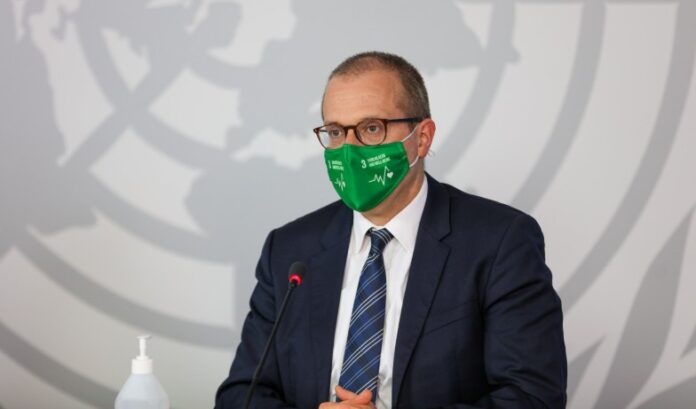355,000 have died of COVID-19 in the WHO European Region, including 29,000 last week, or one person every 17 seconds, the WHO Europe Director told a press conference today. However, the director, Dr Hans Kluge says there are encouraging signs.
There have now been over 15.7 million COVID-19 cases in Europe, which accounts for 28% of global cases and 26% of deaths, cumulatively. Over 4 million more cases were reported in the WHO Europe region in November alone.
In the last two weeks, over 80% of countries in the region are reporting elevated incidence (greater than 100 per 100,000 population) with nearly a third reporting very high incidence rates of over 700 per 100,000 population.
“We are seeing increasing signals related to overwhelmed health systems, with reports that in France, for example, intensive care wards have been at over 95 per cent capacity for 10 days and in Switzerland, intensive care units are at full capacity,” Dr Hans Kluge the director of WHO Europe told a press conference in Copenhagen.
“Outbreaks in schools, long-term care settings, and gatherings are also reported,” he added.
Adherence to recommendations, fight denial and disinformation
An average of 4,500 lives have been lost to COVID-19 in Europe every day. “I would like to emphasize that every time we choose to follow guidance, stop the spread of misinformation, address denial, we contribute to preventing lives lost due to COVID-19” Dr Kluge noted.
Tightening of preventive measures has already slowed down the spread of the virus. New weekly cases of COVID-19 decreased from over 2 million the week before last to approximately 1.8 million cases last week. “It’s a small signal, but it’s a signal nevertheless,” Dr Kluge commented.
Lockdowns: last resort measure
In the eyes of the WHO European director lockdowns are avoidable. “I stand by my position that “lockdowns” are a last resort measure.” He says that mask use is by no means a panacea and needs to be done in combination with other measures. “However, if mask use reached 95%, “lockdowns” would not be needed. But, at 60% or lower masks use, it is hard to avoid lockdowns.”
He said that there is significant collateral damage associated with lockdowns: including increased mental health issues, alcohol and substance abuse, gender-based violence, essential service disruption and a need for improved economic support for the people affected, including those people who lose their jobs.
Dr Kluge pointed out that the vast majority of schools have remained open for almost 100 consecutive days.
WHO remains firmly committed to supporting the countries of Europe to keep primary schools open and ensure safe learning for all. “Children and adolescents are not considered primary drivers of transmission, and as such, school closures are not considered to be an effective measure for the control of COVID-19,” Dr Kluge insisted.
“To those countries considering this course of action, I request that you consider the adverse effects in terms of educational outcomes, mental and social well-being of school closures. Where closures are enacted, we ask that children in vulnerable situations and with special needs should be prioritized to receive support, and to attend in-person teaching,” he added.
He also insisted that children should benefit from the upcoming Christmas and the festive season ahead. “It will be a different Christmas but that does not mean it cannot be a merry one.”
Vaccinations: a hope in the war against the virus
“While vaccines won’t stop COVID-19 entirely, and don’t answer all our questions, they do represent a great hope in the war against this virus,” the WHO European director declared.
“However, this promise will never be realized unless we assure all countries have access to the vaccine market, that it is delivered equitably, that it is effectively deployed and countries address pockets of vaccine hesitancy.”
WHO Europe equally recommends that we protect “our elderly and vulnerable with seasonal influenza and pneumococcal vaccines,” and “furthermore, a reconfiguration of testing policies, for contact tracing, isolation of cases and suspected cases, identification of super-spreader events, and monitoring of high-risk situations through targeted testing and surveillance, offers great returns on mitigating transmission.”
Additional links:

